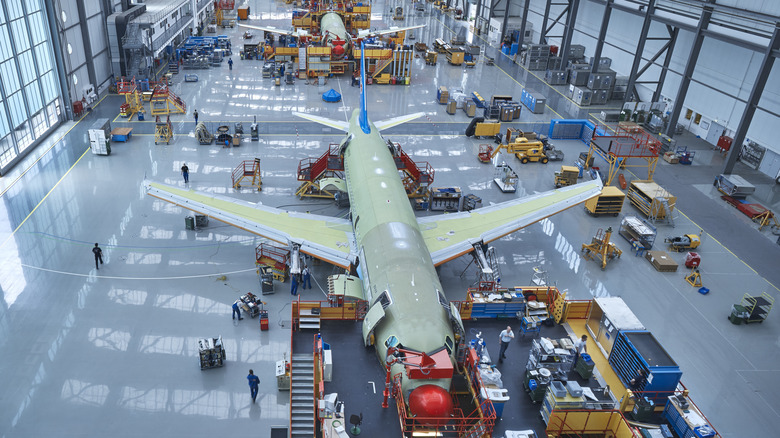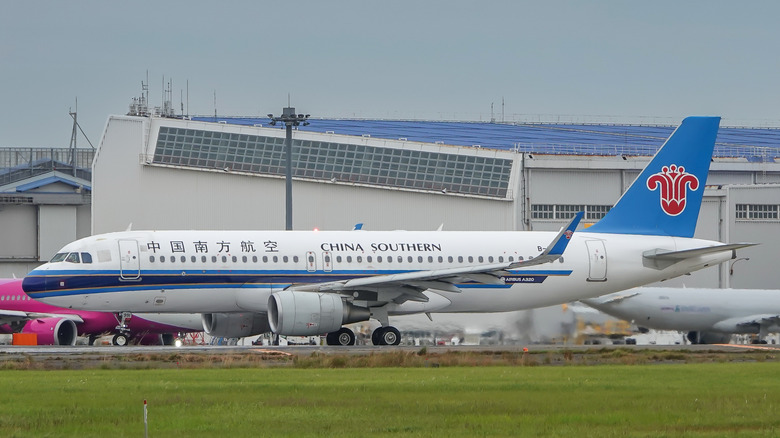Why Airbus Builds Commercial Jets In China
Airbus is part of the duopoly that dominates the global passenger jet market, having an almost complete stranglehold alongside Boeing. The company builds most of its aircraft in Europe but has other manufacturing hubs across the globe, including a plant in Mobile, Alabama, where it produces the Airbus A320 and A220 models. However, the biggest single-country market for Airbus' range of commercial planes is China. The company currently boasts over 2,200 planes in service across Chinese airlines, representing 55% of the total Chinese market.
Given this fact, it shouldn't be a surprise that Airbus has factories in China. The company has had manufacturing facilities in China since its first assembly line opened in Tianjin in 2008, with the plant delivering its first A320 the following year. Since then, the plant has delivered over 600 aircraft, mostly A320neos and the slightly larger A321neo. This was the first Airbus assembly plant located outside the company's European base. Since then, Airbus's presence in the country has widened to include a widebody completion center, a composite manufacturing center, and an innovation center.
This raises the question: Why is Airbus building commercial jets in China? Ultimately, it comes down to the company's need for proximity with its largest customers. However, it's also a response to the growth in the global commercial aircraft market, with rival Boeing predicting that the Chinese market's demand for airplanes will grow to $1.1 trillion in the immediate future.
Why Airbus can't ignore China's aviation growth
Both Airbus and Boeing are expecting the Chinese market will become their most important. Predictions show that China will be the largest aviation market by 2043, surpassing both the U.S. and Europe. There is also the threat from Chinese competitors to be considered. Although still a relatively new project, the Comac C919 narrow-body aircraft is a homespun Chinese airliner that directly challenges the stranglehold currently held by the A320 and the Boeing 737. While the C919 is currently restricted to flying within Chinese airspace, it may yet become a serious contender in the narrow-body sector.
This is why Airbus is staking a claim to remain relevant inside the region. With China expected to have 11,160 aircraft in service by 2043, the company wants to establish a presence that involves more than just airliners leaving production lines. It's also focusing on the service side of the industry. As the fleet size grows, so do the maintenance requirements needed to keep the fleet flying.
Airbus forecasts that this sector will grow from $2 billion in 2024 to $6 billion by 2043, and such growth will also demand a skilled workforce, with training needed for everything from pilots to maintenance specialists. Thus, the Chinese aviation industry is expected to require an additional 478,000 workers by 2043. In short, China is set to become the biggest global market for commercial airlines; by establishing a presence now, Airbus is ensuring it doesn't miss the bus.

